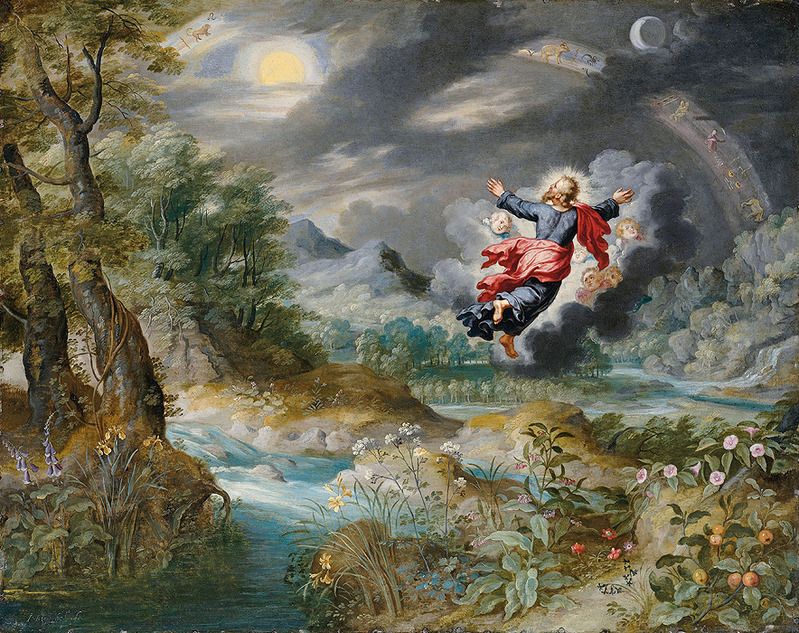
The Engagement of Joseph and Mary
The Story of Jesus begins during the engagement period of a young Jewish couple. The name of the girl is Mary, a derivative of the name Mariam the sister of Moses. Tradition states she was born September 8th and was the daughter of Joachim and Anne. Scripture does not specifically state the place where Mary was born. However, there are 3 oral traditions concerning this issue. One tradition states that her parents were originally from the city of Sepphoris and moved 3.5 miles to Nazareth. A second tradition states she was born in Nazareth and her parents later moved to Sepphoris. A third traditions says that she or her parents lived in a house located near the Sheep Gate in Jerusalem. Matthew and Luke say that Mary was from Nazareth but do not say that she was actually born there. Nazareth was a small village located on an ancient trade rout established circa 1,400 B.C. It is not mentioned in the Old Testament, Talmud nor by the Jewish historian Flavius Josephus. There is a forth tradition that comes from the apocryphal Gospel of James. It was written in 150 A.D. and has been determined to be a literary work of fiction. However, it states that Mary was born in a grotto or cave near the Pools of Bethesda. In 1131 A.D. the crusaders built the Church of Saint Anne over the site.
The name of the young man engaged to Mary is Joseph, the son of Jacob (Matthew 1:16). Very little is recorded about Joseph as he was only the stepfather of Jesus. However, a second century writing states that Joseph’s grandfather was named Matthan who married a woman named Estha and they had a son named Jacob. Matthan died and Estha married his relative Melchi and had a second son named Heli (Luke 3:23). Thus, Jacob and Heli were half-brothers. Heli died childless and Jacob married his widow to produce an heir for Heli’s blood line which was required by Jewish law. He fathered Joseph, the biological son of Jacob but by Jewish law the son of Heli (Eusebius Ecc. History 1:6:7). Thus, the names of both men are listed in the Gospels as Joseph’s father.
Traditionally, a Jewish girl would be considered eligible for engagement after she had her first menstrual period usually around the age of twelve. Jewish boys were considered eligible for engagement around the age of 13. This would later become the age when a boy was Bar mitzvah and considered responsible for his own actions. By Jewish law, a person over the age of 19 was considered an adult. A Jewish marriage might be arranged by the families and the groom may have been required to offer a payment or dowry to the girl’s father. By the first century, the Jewish Mishnah Ketubbot required the groom to write up a document or orally state to the bride's family that, in the event of a divorce or his death, an agreed upon payment would be made to the bride's family as a dissolution payment. It was up to the two fathers to work out the marriage agreements between a young couple. Once the young man’s proposal was accepted, the traditional engagement period of one year would begin.
Scripture makes no mention of how old Joseph or Mary were at their engagement. Rabbinic texts advise that a young girl na'arah, a "prepubescent girl" should be betrothed around the age of twelve and married about one year later (ketubbot 5:2). Research of artifact and textual evidence of age at marriage for Jewish girls in the first century show that most married between the ages of twelve and seventeen with the greatest number marrying at age thirteen. Mary was probably in this age group. We know that they were into their one-year engagement period when Mary, still a virgin, conceived and Joseph married her. This would now make Mary approximately fourteen or fifteen. Oral history tells us that Joseph was older than Mary but it does not tell us how much older. The Mishnah recommends that males be married by age eighteen (Avot 5:21). Still other texts suggest marriage at younger ages. However, because Joseph took Mary on his own seventy miles to Bethlehem to register for the census, we can rightly assume that he was of legal age. This age, as established by Mosaic Law, was nineteen years old or older. The age of the couple may be considered scandalously young by today’s Western standards but history proves that this is not the case. Prince Arthur of England was engaged to Princess Catherine of Spain when they were three years old and they were married at fifteen years of age. Even today in countries throughout the world, girls thirteen and fourteen years of age routinely marry and give birth.
Scripture tells us that Mary lived in the village of Nazareth (Luke 1:26, Luke 2:4). It also tells us she had a visitation by the angel Gabriel while she was in her parents’ home (Luke 1:28). Mary then immediately goes and tells Joseph about the event and that she is now pregnant. However, because we now know for certain that Jesus was born in June of 2 B.C., this would mean He was conceived in September of 3 B.C. And it was at this time that the apostle John’s vision of a virgin in the sky with the moon at her feet actually occurred (Revelation 12:1). And it is in September that the Jews celebrate the last 3 annual Jewish feasts known collectively as Rosh Hashanah. Therefore, Joseph as a healthy male was required by Jewish law to be in Jerusalem for these feasts. So, Mary might have had to wait several days for Joseph to return to Nazareth. But when she told him about the visitation of the angel, the news understandably caused Joseph to experience great anxiety such that he decided to go to bed. He must have been in his own home at this time for him to have gone to sleep because by Jewish law, the two could not share a house until they were married (Matthew 1:18). If the couple had lived in different villages, then Mary would have been expected to move into the home of the Joseph’s parents during the one-year engagement period to become acquainted with His family. But since tradition states they were from the same village, Mary would have only been required to regularly visit Joseph’s family home to help with daily domestic chores. Joseph, with the help of his family and friends, would begin to construct or excavate an additional room onto the existing family house over the next year to serve as a future bedroom for he and his wife.

If you enjoy the information provided on this site, please consider making a donation of any amount to help continue its production. Donate Now
